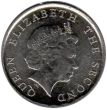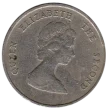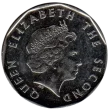Exchange your Eastern Caribbean Dollars
Do you have leftover Eastern Caribbean Dollars? We offer a fast and easy way to exchange both current and withdrawn Eastern Caribbean Dollar banknotes and coins. Convert them into your local currency today with our quick and hassle-free exchange service.
$ - XCD
The Eastern Caribbean Dollar has been in use since 1965, and its peg to the U.S. Dollar has ensured stability for the region’s economies.
Eastern Caribbean Dollars Information
The Eastern Caribbean Dollar (XCD) is the official currency of eight countries and territories in the Eastern Caribbean, including Antigua and Barbuda, Dominica, Grenada, Saint Kitts and Nevis, Saint Lucia, Saint Vincent and the Grenadines, Anguilla, and Montserrat. The currency has been in use since 1965, replacing the British West Indies Dollar, and is issued by the Eastern Caribbean Central Bank (ECCB), which oversees monetary policy for the member states of the Eastern Caribbean Currency Union (ECCU).
The Eastern Caribbean Dollar is subdivided into 100 cents, and the currency is issued in both coins and banknotes. Coins are available in denominations of 1, 2, 5, 10, 25 cents, as well as 1 dollar. Banknotes are issued in denominations of 5, 10, 20, 50, and 100 dollars. The designs of Eastern Caribbean Dollar banknotes often feature images of Queen Elizabeth II, as well as local landmarks and historical figures important to the region’s history.
One of the key features of the Eastern Caribbean Dollar is its peg to the United States Dollar. The XCD is pegged at a fixed exchange rate of 2.7 XCD to 1 USD, providing stability and confidence in the currency. This peg has been in place since 1976 and has contributed to the overall economic stability of the member countries, particularly given their reliance on tourism, agriculture, and international trade.
The Eastern Caribbean Central Bank (ECCB) plays a central role in managing the currency and ensuring the financial stability of the region. The ECCB was established in 1983 and is headquartered in Basseterre, Saint Kitts and Nevis. It is responsible for issuing currency, regulating financial institutions, and maintaining monetary stability across the eight member countries. The ECCB’s currency management is widely regarded as prudent, and the bank has been successful in maintaining low inflation rates an…
The economies of the Eastern Caribbean are small but highly open, with tourism being one of the main sources of income for many of the member countries. Agriculture, particularly the production of bananas, nutmeg, and other tropical fruits, also plays a significant role in the region’s economy. The stability of the Eastern Caribbean Dollar has been crucial in supporting these industries by ensuring predictable exchange rates and fostering confidence in the local economies.
While the Eastern Caribbean Dollar has remained stable for several decades, the region faces ongoing economic challenges, including vulnerability to natural disasters such as hurricanes, which can have a significant impact on the local economies. The ECCB has worked to build financial resilience in the member states by promoting sound fiscal management and encouraging diversification of their economies.
The Eastern Caribbean Dollar continues to play a vital role in the region’s economic integration and development. It allows for seamless trade and investment across the member countries, supporting economic growth and fostering closer ties between the nations of the Eastern Caribbean. The currency’s peg to the U.S. Dollar has ensured that it remains stable and trusted, both within the region and in international markets.
In conclusion, the Eastern Caribbean Dollar has been the official currency of eight Eastern Caribbean countries since 1965. Its stability, supported by its peg to the U.S. Dollar, has contributed to the economic resilience of the region.



